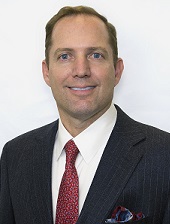It took more than 50 years for Pentagon Federal Credit Union to reach $1 billion in assets. But every year since 2001, the Alexandria, Va.-based credit union has been generating an average of approximately $1 billion in assets per year.
And it's set to reach $20 billion in assets by May 1, making it the third credit union in the nation to reach that milestone. The Vienna, Va.-based Navy Federal Credit Union is No. 1, with $73.2 billion in assets, and SECU of Raleigh, N.C., is second with $31.8 billion in assets.
In a recent interview with CU Times, the 49-year-old PenFed President/CEO James R. Schenck (pictured) said the key to the credit union's explosive growth has been and continues to be its lower-than-peer operating cost structure, which has enabled it to compete on product pricing for its 1.3 million members.
Lower operating costs have also allowed PenFed to build a reputation as a destination employer to attract and retain talent and become a leader in giving back to the communities it serves through the PenFed Foundation and many other charitable initiatives.
In addition to lower operational costs, however, PenFed's investments in acquiring residential and commercial firms throughout the country in 2012, 2013 and 2014, as well as credit union consolidations have made substantial contributions to the credit union's revenue generation.
 “At PenFed, we run at about 130 basis points of operating expense,” Schenck said. “The top 10 [credit unions] average is about 235 basis points.”
“At PenFed, we run at about 130 basis points of operating expense,” Schenck said. “The top 10 [credit unions] average is about 235 basis points.”
According to NCUA financial performance reports, PenFed's operating expense to average assets is 1.43%, which is well below the peer average of 3.23%. Its operating expense to gross income is 36.03% compared to the peer average of 67.45%.
“We like to keep our operating expenses lower than all of our peers so we can compete in any rate environment, a low rate environment, falling rate environment, or a rising rate environment,” he explained. “If you can control your operating expense above your peers, it doesn't matter where the external rate market is, you have the competitive advantage. It's that simple a formula. If you have the competitive advantage in operating expenses you can redeploy that advantage into price no matter what the rate cycle is.”
In addition, adding assets and members at a much faster pace than employees and brick and mortar locations has enabled PenFed to keep its operating cost lower than its competitors.
We are predominantly doing business through mobile, our website and phone,” Schenck said. “Americans have become very comfortable with purchasing products online.”
Though Schenck plans to invest more resources to grow web, mobile and phone channels, he is not abandoning the expansion of its branch network. He noted, however, that the credit union's small footprint of about 30 branches worldwide gives PenFed yet another huge operational efficiency compared to its multibillion-dollar peers.
Read more insights from PenFed's CEO in the March 30, 2016 print edition of Credit Union Times.
© 2025 ALM Global, LLC, All Rights Reserved. Request academic re-use from www.copyright.com. All other uses, submit a request to [email protected]. For more information visit Asset & Logo Licensing.








